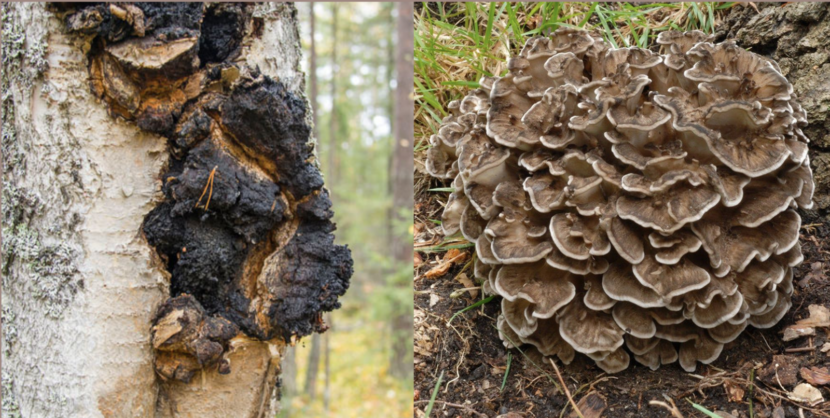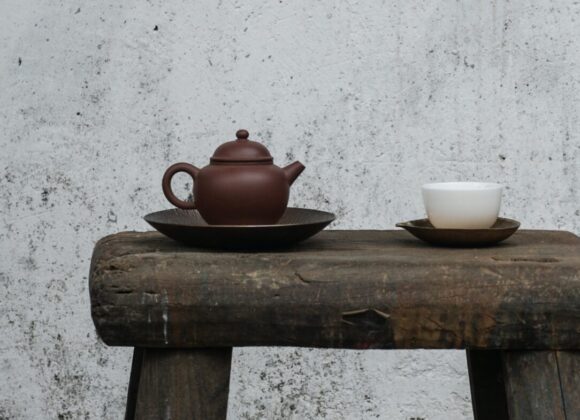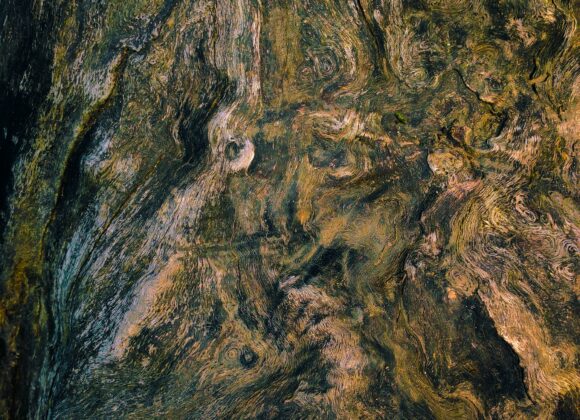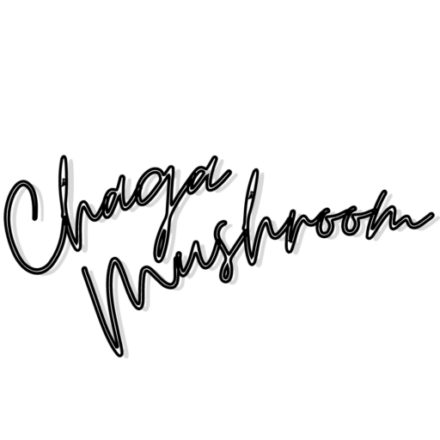In this article, you’ll get an insight into a Chaga vs Maitake mushroom pair. You’ve most likely heard them being called medicinal mushrooms. Different by nature, like in taste and texture, as well as health-promoting qualities – they share one thing in common, after being extracted they have incredible abilities to support and heal our bodies.
What is Maitake Mushroom?
The name Maitake comes from Japanese and translates to “dancing mushroom”. Some other names you might recognize this medicinal mushroom with are “sheep’s head” or “ram’s head”. Maitake mushroom is known primarily for its beta-glucan polysaccharides and stands out amongst the other medicinal mushrooms thanks to SX-fraction.
This is a water-soluble compound, that has gotten its name due to its ability to counteract the effects of Syndrome X. Otherwise known as metabolic syndrome and refers to a group of risk factors, that include high blood pressure, excess fat, that unfortunately feed on one another and can severely negatively impact your health and wellbeing. The SX-fraction compound has the potential to reduce blood glucose levels, blood pressure, as well as your body weight. Making it a wonderful healer for those who suffer from obesity and diabetes. SX-fraction also works as an adaptogen, so it does not only stabilize blood sugar for people with hypoglycemia but will also benefit you when dealing with hyperglycemia.
You’ll be able to identify Maitake Mushroom by its clusterlike form, resembling fluffed feathers of a bird. This look has given Maitake another popular nickname “hen-of-the-woods”. The mushroom can be found in the northeastern parts of Japan and North America, growing on the base of oak or elm trees. Maitake can be eaten fresh, dried, and if you’re taking it for medicinal purposes the elixir is often made into a powder form.
The mushroom also contains l-glutamate, the amino acid responsible for the “fifth flavor” known as umami. Next to fatty animal products like bacon and parmesan cheese, even worse artificial flavor-enhancers like monosodium glutamate (MSG), Maitake is the healthiest option to enhance your palette.
What is Chaga Mushroom?
Chaga is a polypore fungus that grows mainly on birch trees in cold climates. It grows on living trees, but it is parasitic. This means that the fungal mycelium enters the stem of a mature tree through a crack or a wound in the bark and then starts to absorb and synthesize healthy compounds that we, humans, will consume.

These mushrooms grow best on the outside of yellow and white birch trees. You can find Chaga mushrooms in abundance in the northern hemisphere where it has higher forest altitude, like the northern deciduous forests. Chaga thrives in cold, damp conditions, and has a great tolerance for surviving hard winters.
Natural healers and traditional medicine practitioners have been aware of this mushroom for centuries. Recent scientific studies demonstrate the effectiveness of Chaga in treating a number of diseases and afflictions. The Memorial Sloan Kettering Cancer Center lists the purported uses of Chaga as treating and preventing cancer, stimulating the immune system, reducing inflammation, and protecting the liver.
As mentioned before, these types of medicinal mushrooms are not edible in the standard method. Instead, their properties need to be extracted. The extraction requires prolonged simmering or soaking. This process makes the beneficial components bioavailable to the human body, which means the body can absorb the nutrients.
Related: Chaga Mushroom Extraction Methods
Chaga has incredible immunomodulating powers. Chaga’s polysaccharides, specifically the beta-glucans, have the ability to increase the production of lymphocytes (a type of white blood cells that regulate the immune response to infectious microorganisms and other foreign substances). Chaga is also known as one of the richest sources of antioxidants found in nature. Antioxidants are what protect your body from free radicals, which otherwise would lead to cell degeneration (chronic fatigue, chronic pain, chronic illness, and cancer).
Abundance in betulin, which gives antitumor and anticancer properties. Betulin produces a derivative called betulinic acid, which is antibacterial, antiviral, anti-inflammatory, and antioxidant in nature, with adaptogenic properties. This is what makes Chaga able to balance and restore your entire system, which can lead you to function at your highest potential!
Related: 5 Benefits of Chaga for Skin Health
Chaga vs Maitake, which one is more beneficial?
As you discovered Maitake is primarily known for its beta-glucan polysaccharides, which makes it stand out amongst the other medicinal mushrooms thanks to SX-fraction. The SX-fraction compound has the potential to reduce blood glucose levels, blood pressure, as well as your body weight. Making it a wonderful healer for those who suffer from obesity and diabetes. It’s best to include Maitake into your health routine if you’re looking to manage weight, need help to stabilize blood sugar, and aid digestion.
Chaga in contrast is famous for being one of the highest natural antioxidant sources in the world. In addition to that its abundant in betulin, which gives the medicinal mushroom antitumor and anticancer properties. Betulinic acid makes Chaga antibacterial, antiviral, anti-inflammatory, and adaptogenic properties. Therefore, if you wish to prevent or cure a cold, age gracefully with shiny hair and glowing skin, as well as lower inflammation in your body, Chaga will be your savior!
Chaga vs Maitake accessibility
When it comes to Chaga, it’s important to remember that Chaga gets most of its nutritional value from its host – the Birch tree. The medicinal value of Chaga that has been harvested from trees other than birch may be entirely different. You should especially pay attention to your Chaga being wild harvested, as we’ve heard of Chaga grown in laboratories.
This has become a bigger issue over the last few years, as Chaga has gained more mainstream popularity. Business motivated corporates are trying to cut corners and grow Chaga faster and more efficiently indoors. This means that your bought Chaga possesses no health benefits but is most likely marketed as a health product.
As it’s not as common to come across Maitake Mushroom in the wild, you’ll be able to find it in many different forms like capsules, elixirs, or powders, if you wish to test it out for culinary purposes you can also order dried whole mushrooms or grow a fresh batch at home by using a grow kit.










